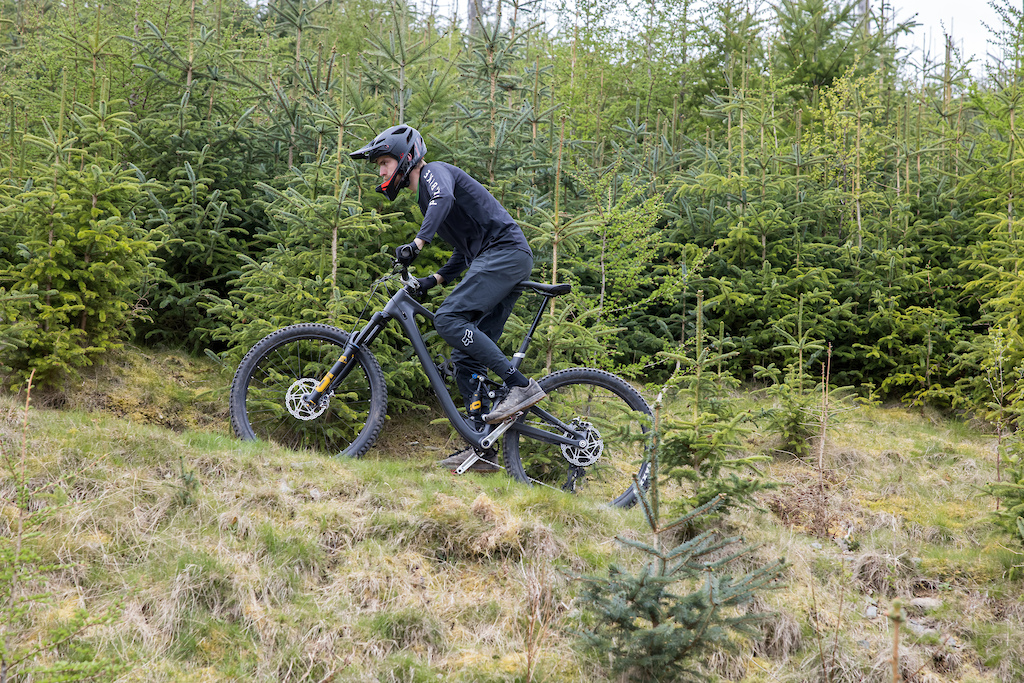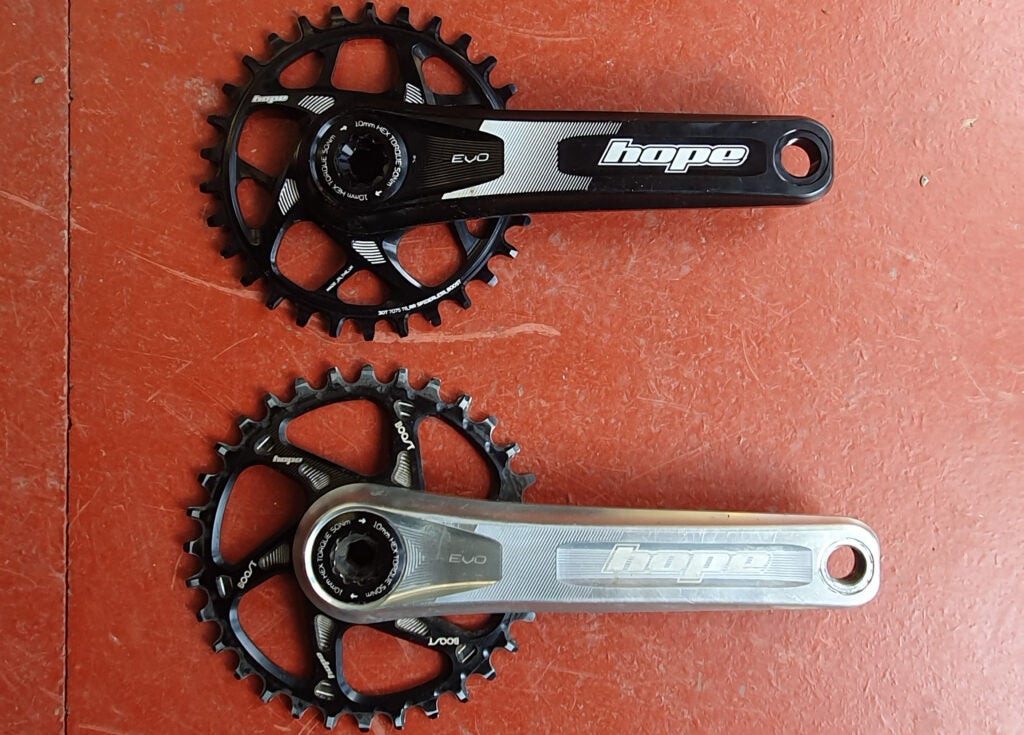No products in the cart.
Outdoor Adventure
Why You Should Use Shorter Crank Arms on Your Mountain Bike
Heading out the door? Read this article on the new Outside+ app available now on iOS devices for members!
Download the app.
A version of this article appeared originally appeared on Pinkbike.
For most mountain bikers, those slender metal limbs known as crank arms, which transfer the power from your legs to the bike’s chain, don’t receive much thought. They typically measure between 165 millimeters and 175 millimeters in length, most commonly 170. But what if we told you that these standard sizes are longer than ideal for almost all mountain bikers? Let’s delve into the science behind crank length and why shorter crank arms could be better for the majority of riders.
Seven scientific studies have examined cyclists’ power output, pedalling efficiency, and style across a broad range of crank lengths. Surprisingly, these studies show that unless you venture to extremes, like 120 millimeters or 220 millimeters, crank length appears to have no significant impact on power output or efficiency, even when comparing crank lengths as far apart as 145 millimeters and 190 millimeters. It turns out that when using a smaller crank, cyclists naturally pedal at a faster cadence (spinning their legs at a higher RPM) and this cancels out the reduced leverage in terms of power output.
Moreover, three out of these seven studies suggest potential advantages of shorter crank lengths. One found that shorter cranks reduced the time required to increase power output during a sprint. Another concluded that shorter cranks could help reduce fatigue when pedaling out of the saddle, while a third suggested that they could reduce strain on the hip and knee joints. Combine these findings with the fact that shorter cranks can minimize the risk of pedal strikes on uneven terrain, a common cause of crashes and stalls, and it makes a very compelling case for adopting shorter cranks for mountain biking, at least for most riders.
What About Shorter Crank Arms for Tall Riders?
One study looked into how much power cyclists could generate as a function of crank-length to leg-length ratio. Essentially, they found that the optimum crank length was somewhere around 20 percent of the rider’s leg length, but crucially, riders’ power outputs weren’t significantly compromised when using any crank between 15 and 25 percent of their leg length.
This means that for someone of average male height (five foot, nine inches, according to the CDC), the ideal crank length would be around 161 millimeters, or 150 millimeters for the average female (five foot, four inches tall, according to the CDC). This already makes a case that the standard 170 millimeter arms are unnecessarily long for most riders. In the wake of this study, we saw it suggested that very tall riders should be using longer-than-standard cranks for maximum power output, but looking at the data more closely suggests that even for someone as tall as two meters (six foot, seven inches) riding a crank as short as 145 millimeters wouldn’t significantly compromise their power production.

Testing Shorter Crank Arms
I wondered if a tall rider like me (six foot, three inches/191 centimeters) would find some compromises with short cranks, or if I could derive any real benefit.
I experimented with shorter crank arms, moving from the standard 170 to 155 millimeter cranks. I used a 32-tooth chainring with the 170 millimeter arms and a 30-tooth chainring with the smaller crank, to compensate for the reduced leverage and higher cadence with the latter. The science suggests this shouldn’t compromise my power output much, if at all, but I wanted to find out for myself.
The difference was immediately noticeable while pedaling—I had a narrower stance and a smaller pedal circle. But, after adjusting the saddle height upwards by 15 millimeters to maintain proper leg extension, I found no significant downsides to the shorter cranks. Climbing steep, technical terrain, pedaling out of the saddle, and navigating crux moves all felt at least as comfortable with the shorter cranks. Moreover, thigh burn on long descents was reduced, and quicker pedal strokes along with improved ground clearance made it easier to maintain or regain momentum on technical terrain.
How to Experiment
In conclusion, if you worry about clipping your pedals on the ground when pedaling over choppy ground, if you’re below average height, or if you suffer from knee or hip pain while cycling, shorter crank arms might be worth considering. (It’s worth checking with a professional bike fitter too, especially if you suffer from joint pain in the saddle.) Any one of those reasons could be enough to consider shorter cranks. Personally, I’m well above average height and have never had an issue with standard cranks, but I still benefitted from the improved ground clearance and reduced leg ache when using shorter cranks.
However, keep in mind that complementary adjustments, like a smaller chainring and higher saddle height, may be necessary, and some bikes might not accommodate these changes easily. While the standard 170 millimeter crank may be acceptable for many people, they’re probably longer than ideal for most people, especially those who ride challenging terrain frequently. The point of this article isn’t that everyone should rush out to buy the shortest cranks they can find, but to challenge the idea that 170 millimeter cranks should be the standard size for mountain bikes.
Source link

